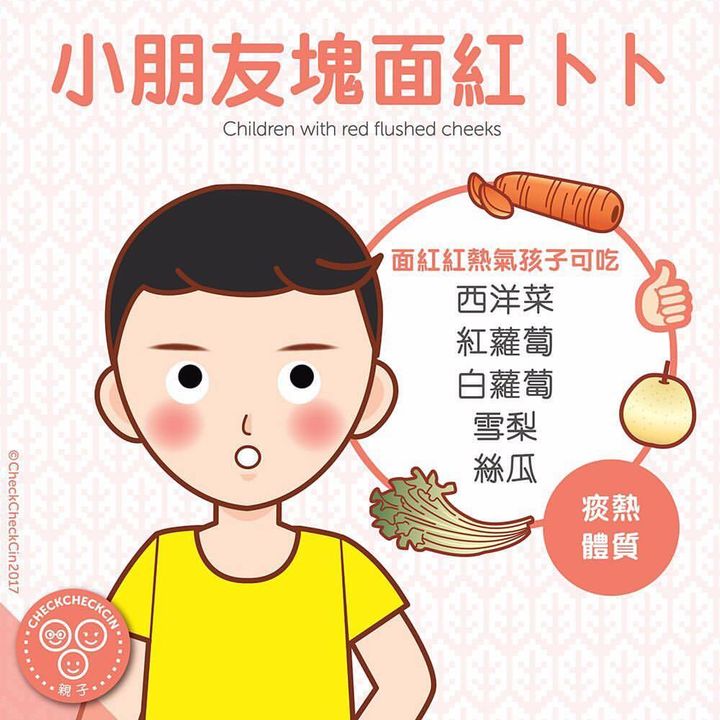September 22, 2017
小朋友面紅紅份外得意?
小朋友塊面紅卜卜?
好多人看到小孩子面頰紅通通就覺得很可愛,原來過分的紅,也是身體的表徵。孩子本身皮膚較薄,自我調節能力相對低,假如是在秋冬時出現泛紅的狀況,可能是對乾燥而引起的敏感症狀,正常過幾天會回復正常的,其實無大礙。但是假如孩子即使是在不冷的天氣,也會出現面紅、唇色紅,也有煩躁、啼哭、大便乾硬、小便黃,又經常會咳嗽等熱氣的症狀,就有可能是痰熱的體質。假如是全母乳的嬰兒,媽媽們就是注意自己的飲食,少吃熱氣食物,如果已經開始餵食的,媽媽就要讓孩子多喝開水,多吃蔬菜水果,減少吃易引起燥熱的食物。也可以適量食用小米粥。如果孩子面部泛紅,而且伴隨有痕癢、紅點,就要立即向醫生諮詢了。
面紅紅熱氣孩子可吃這些:
﹣西洋菜
﹣紅蘿蔔
﹣白蘿蔔
﹣雪梨
﹣絲瓜
Children with red flushed cheeks
A lot of people see red rosy cheeks on children and think it is vey cute, but turns out cheeks that are overly red could be a bodily symptom too. Kids naturally have thinner skin and their bodies’ ability to self-adjust. If you are seeing the red cheeks during fall/winter, it could be dryness-related allergies and should resolve itself in a few days. But if your child has extra red cheeks when it’s not cold, accompanied with red lips, irritability, frequent crying, dry stool, yellow urine, and heat-related symptoms like frequent coughing, then your child could have hot phlegm-heat body constitution. For infants exclusively breastfed, the mother would have to watch her diet and reduce hot-natured foods. For infants that have started solids, they should be given more water, vegetables and fruits and reduce heat-inducing foods and appropriately have some millets congee. If the child has red cheeks with itchiness or rash, then it would be time to consult a doctor.
Children with red cheeks and heat-related symptoms can eat:
– watercress
– carrots
– radish
– pears
– Chinese okra



